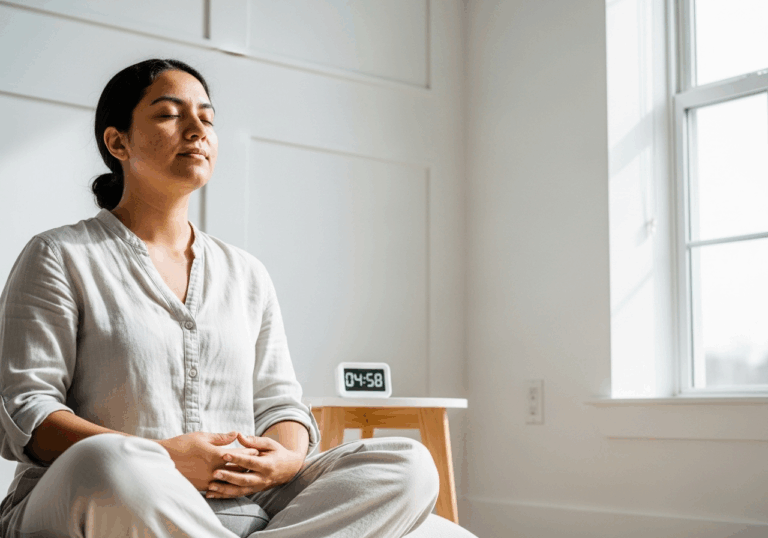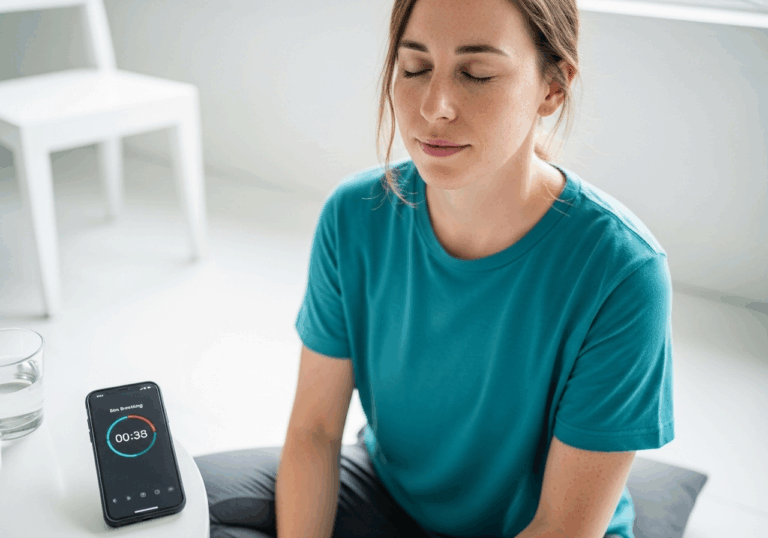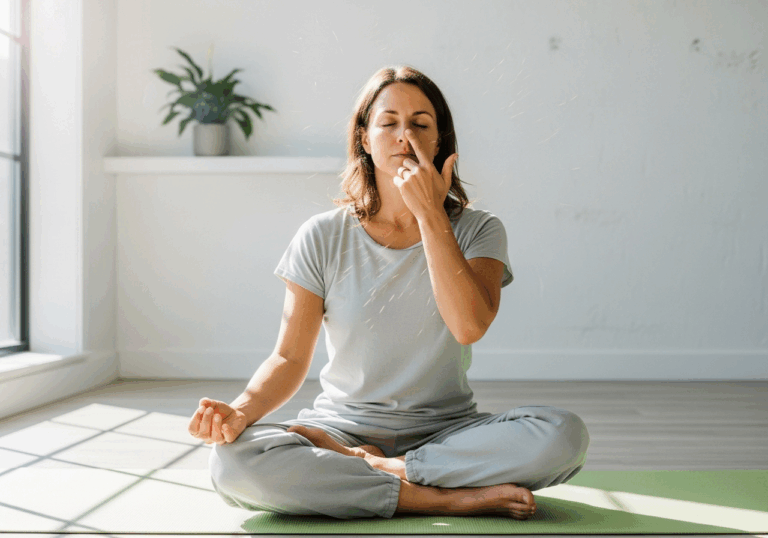Science-Backed Tips
Breathe Deeply for Better Heart Health
5 minutes of combined breathing techniques can lower blood pressure.
📊 Did you know?
💡 Why It Matters
1️⃣
Lowering systolic blood pressure by 10 mmHg can reduce the risk of heart disease by 20%.
2️⃣
Improved heart rate variability (HRV) is associated with better stress management and emotional regulation.
3️⃣
Incorporating breathing techniques can enhance overall mood and wellbeing, contributing to a healthier lifestyle.
✅ Try These Micro-Tips
🎯
Practice combined deep breathing and alternate nostril breathing for 5 minutes daily.
🎯
Incorporate 2 minutes of deep breathing before starting alternate nostril breathing.
🎯
Aim for this practice at least 5 times a week for optimal benefits.
🎯
Monitor your blood pressure and heart rate variability to track improvements.
📚 The study
Why does this matter? Lowering systolic blood pressure by just 10 mmHg can lead to a remarkable 20% reduction in the risk of heart disease. Furthermore, improved heart rate variability is closely linked to better stress management and emotional regulation. By incorporating simple yet effective breathing techniques into our daily routines, we can significantly enhance our overall mood and well-being, paving the way for a healthier lifestyle.
This research highlights the profound impact that mindful breathing can have on our physiological state, making it a valuable tool for anyone looking to improve their mental and physical health. Embracing these practices not only fosters a sense of calm but also equips us with the tools to navigate the stresses of everyday life more effectively.
❓ Frequently Asked Questions ❓
Learn more
What is alternate nostril breathing?
Alternate nostril breathing is a yogic breathing technique that involves inhaling and exhaling through one nostril at a time. It is believed to promote relaxation and balance in the body and mind.
How does combining alternate nostril breathing with breath awareness affect blood pressure?
Combining alternate nostril breathing with breath awareness for 5 minutes has been shown to significantly decrease systolic blood pressure. This reduction can contribute to a lower risk of heart disease.
What is RMSSD and why is it important?
RMSSD stands for Root Mean Square of Successive Differences and is a measure of heart rate variability (HRV). Higher RMSSD values are associated with better stress management and emotional regulation.
How often should I practice deep breathing and alternate nostril breathing?
It is recommended to practice combined deep breathing and alternate nostril breathing at least 5 times a week for optimal benefits. Each session should last about 5 minutes.
What are the physiological benefits of this breathing technique?
This breathing technique can enhance mood by promoting physiological calm, leading to a significant drop in blood pressure and an increase in heart rate variability. These changes can contribute to overall well-being and stress reduction.
Can I monitor my progress with these breathing techniques?
Yes, you can monitor your blood pressure and heart rate variability to track improvements over time. Regular monitoring can help you assess the effectiveness of your breathing practice.
What is the significance of lowering systolic blood pressure?
Lowering systolic blood pressure by just 10 mmHg can reduce the risk of heart disease by 20%. This highlights the importance of managing blood pressure for long-term health.
How does improved heart rate variability affect my mood?
Improved heart rate variability is associated with better emotional regulation and stress management. This can lead to enhanced mood and overall psychological well-being.
What is the recommended duration for deep breathing before alternate nostril breathing?
It is recommended to practice 2 minutes of deep breathing before starting alternate nostril breathing. This helps prepare the body for the subsequent breathing technique.
What should I expect after practicing these techniques?
After practicing these techniques, you may experience a decrease in blood pressure and an increase in heart rate variability. Many individuals also report feeling more relaxed and uplifted in mood.





